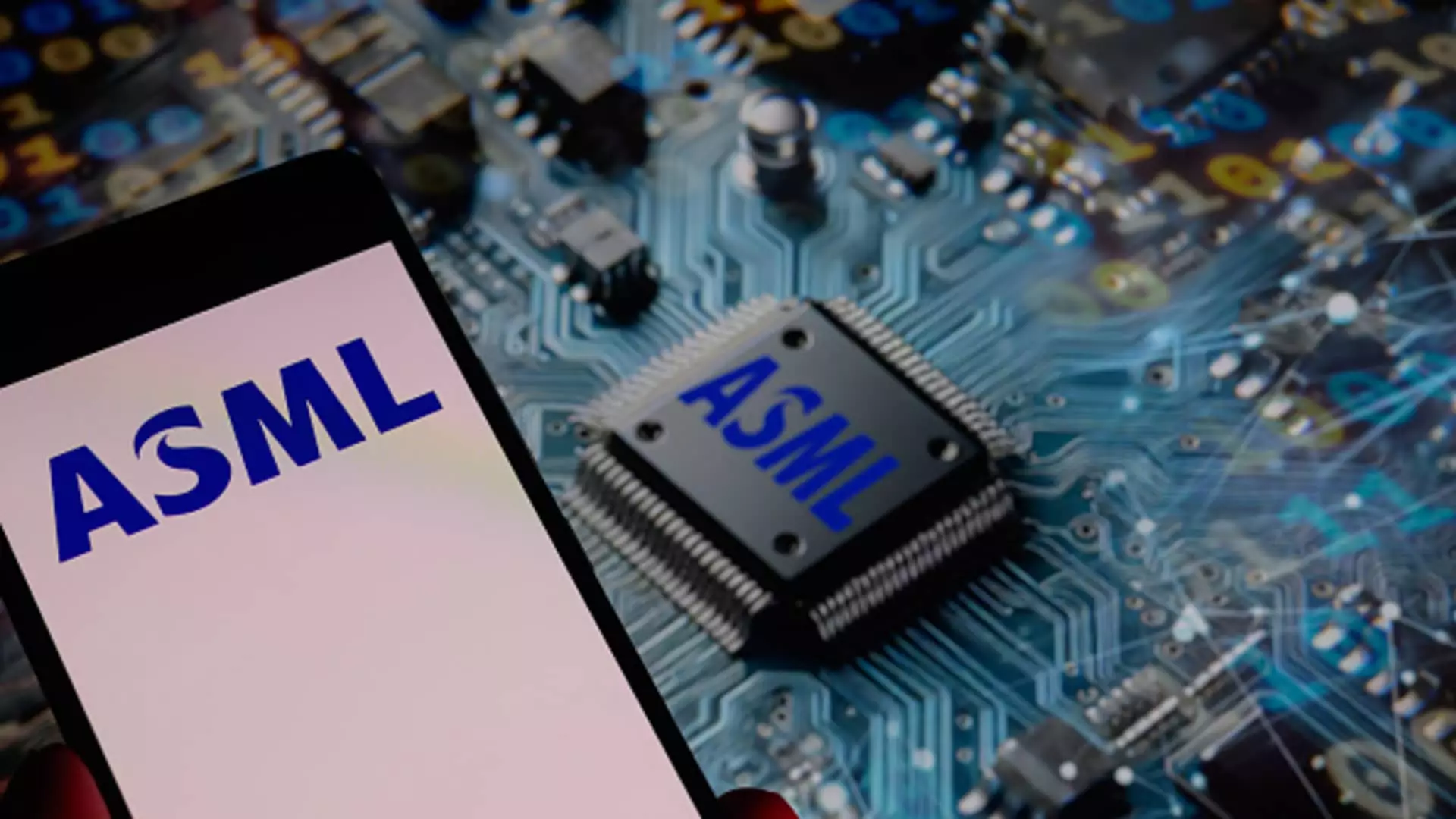ASML’s recent earnings report paints a picture of a company still riding the wave of past successes, boasting impressive second-quarter figures that exceeded analyst expectations. Yet beneath this surface lies a troubling reality: the company’s optimistic outlook for 2026 is now clouded by profound uncertainty. This discrepancy reveals an industry that is more fragile than it seems, especially when magnified through the lens of geopolitical tensions and economic volatility. ASML, a linchpin in the semiconductor supply chain, appears to be overly reliant on bullish assumptions about the future, assumptions that may be increasingly disconnected from the complex geopolitical landscape shaping global technology markets.
Chasing the Illusive Promise of AI-Driven Growth
The enthusiasm surrounding artificial intelligence’s rapid ascent has undoubtedly buoyed companies like ASML. The CEO’s statement that “AI demand remains strong” provides a constrained glimmer of hope amid broader uncertainty. However, this optimism warrants skepticism. While AI chip demand is surging, it is not immune to the broader macroeconomic currents and geopolitical roadblocks, especially U.S.-China tensions and tariff policies. These external forces threaten to disrupt the very foundations on which ASML’s growth projections are built. Relying heavily on AI as a growth driver fosters an echo chamber of hope—one that dangerously ignores the fragility of supply chains, the volatility of international relations, and the potential for policy shifts to derail progress.
The Myth of indestructible technological dominance
ASML’s position as the sole producer of EUV lithography machines grants it a near-monopoly in advanced chip manufacturing. Yet, this dominance may be more tenuous than it appears. Innovation is relentless, and the high costs associated with their next-generation tools—over $400 million each—could become a barrier rather than an advantage. Technological breakthroughs by competitors or alternative manufacturing methods could render ASML’s current technologies obsolete. The promise of continuous growth is built on the assumption that no challenger will emerge, but history has shown that monopolies in tech are often temporary and susceptible to disruptive innovation.
Market Overconfidence and Underlying Risks
Despite beating expectations in the second quarter, ASML’s cautious tone about 2026 reveals an internal acknowledgment of impending risks. The narrowing of the 2025 revenue forecast and the inability to confirm growth for 2026 are signs that analysts—and investors—may be placing too much faith in short-term gains. The company’s optimistic narratives about AI demand could very well mask deeper structural vulnerabilities—such as supply chain disruptions, geopolitical risks, and fluctuating demand cycles. The disconnect between current earnings and future confidence exposes a fundamental flaw: a lack of resilience in the face of external shocks that are now more probable than ever.
The Challenge of Navigating a Divided World
The US-China trade war and shifting tariffs symbolize a more significant threat to the industry than most realize. ASML’s fortunes are now intertwined with policy decisions made in distant capitals, often driven by strategic, rather than economic, considerations. The company’s success hinges on a fragile geopolitical truce that may not hold. Increasing sanctions and export controls threaten to hamper sales and innovation, especially at a time when the semiconductor industry’s growth depends heavily on global cooperation and open markets. This geopolitical turbulence complicates the outlook for the industry at large and casts doubt on the assumption that demand will remain insulated from these external forces.
The False Comfort of Single-Source Dependence
Finally, ASML’s status as the sole supplier of EUV lithography machines elevates the risk of complacency. While their technological supremacy secures significant revenue streams today, it also creates a single point of failure in an unpredictable world. Should geopolitical tensions or technological challenges threaten their supply chain or lead to regulatory crackdowns, ASML’s market position could rapidly erode. The reliance on a handful of core customers like Apple, Nvidia, and TSMC also makes the company vulnerable to shifts in tech giants’ operational strategies or declines in global demand for high-performance chips.
ASML stands at a crossroads where its past achievements obscure serious underlying vulnerabilities. A company that has thrived on technological monopolies and optimistic forecasts must now grapple with a world teetering on the edge of uncertainty. To believe in endless growth amid such turmoil is not only naïve but dangerously reckless. Only by acknowledging these internal and external risks can stakeholders truly grasp the fragile foundation upon which this industry, and ASML’s future, are built.

